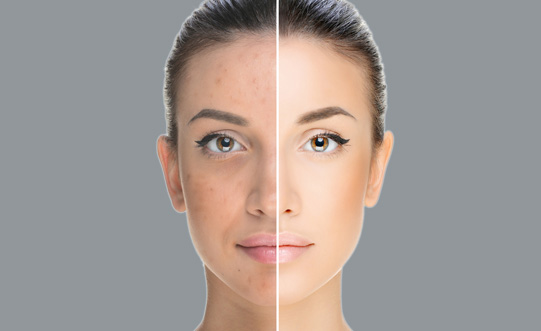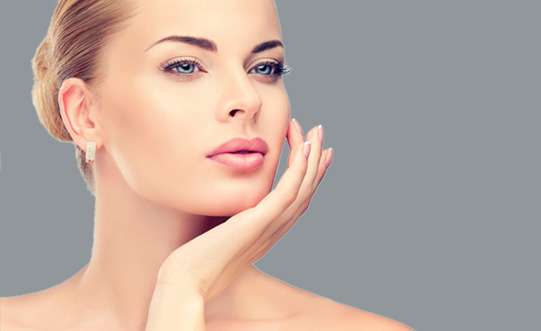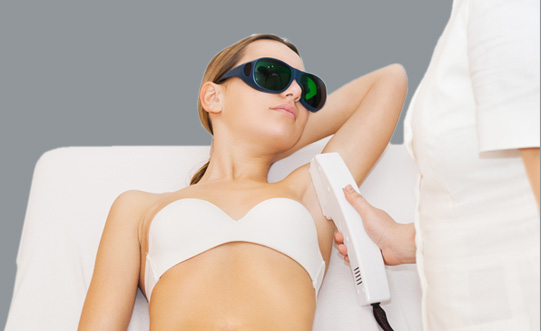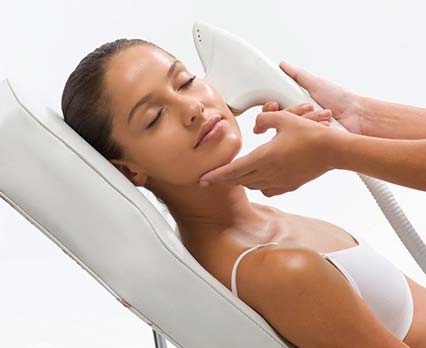 Schedule : Monday-Saturdy 8:00-18:00
Schedule : Monday-Saturdy 8:00-18:00
 +91 98922 34715
+91 98922 34715
 Schedule : Monday-Saturdy 8:00-18:00
Schedule : Monday-Saturdy 8:00-18:00
 +91 98922 34715
+91 98922 34715
The most common disorders of increased pigmentation are melasma (chloasma), solar lentigos (sun spots) and freckles. Solar Lentigos, the brown spots that appear in sun exposed areas like the tops of the hands and face, are the most common pigmentation problem that we treat. All the other disorders can also be treated very successfully with laser therapy.
What are the advantages of Q-Switch laser pigment removal?
This is the NdYAG laser which efficiently decreases the pigmentation of superficial tan, sun spots, freckles, some moles and has also been used for tattoo removal effectively. The laser energy pulse, which is in billionths of a second, releases the pigment into the skin so it can be naturally reabsorbed and disposed of by the body.
And in the process of lightening the skin, even the hair gets lightened along with some very fine villous hair getting shed off temporarily. This is in fact called as the lunch time procedure since it has zero downtime barring a slight redness in sensitive skin types which resolves after couple of hours.
Once the face is cleansed, protective eye wear is provided to the client and the doctor performing. It feels like tiny hot dots on the skin. It takes around 20 minutes for the face. Post procedure sunscreen is applied and it is further suggested to the clients to be regular with the application of sunscreen.
Q-Switched laser is also excellent for removing tattoos. The laser disrupts the tattoo pigment into particles that are naturally swept away by the body’s lymphatic system. Full removal takes an average of 6–8 treatments (depending on the size of the tattoo), spaced 3–5 weeks apart


Radiofrequency (RF) energy treatment is technology for non-surgical tightening of the early signs of loose or sagging skin; ideal for those people who either don’t want, or don’t believe they are old enough to have a surgical procedure. It is commonly used to treat the forehead, under the eyes, cheeks, mid-face, jaw line, and neck. Based on current RF technologies, most people should see at least a mild improvement in their skin tightness, with minimal risks and downtime compared to surgery. Prices for radiofrequency facial tightening treatment depend on the area(s) treated and the device used.
Technically speaking, radiofrequency is the number of oscillations (or waves) per second of the electric and magnetic fields within the radio waves portion of the electromagnetic spectrum.
It is lowest of the electromagnetic radiation frequencies within the spectrum, which itself spans from radio waves, microwaves, infrared, optical (visible light), ultraviolet, x-rays, to gamma rays.
By feeding an alternating current (AC) or voltage through an antenna or electrode, electromagnetic waves can be generated that radiate through space at the speed of light; called radio waves. Radiofrequencies, or radio waves, have wavelengths ranging from less than a centimetre to as long as 100 kilometres.
RF energy when used for skin tightening is able to penetrate deep into the skin and affect the deeper dermis and subcutaneous layers, causing tightening and improvements to the underlying tissue structure, but with little change in skin texture or fine lines and wrinkling.
Laser hair removal is a convenient, noninvasive method for permanently reducing or removing unwanted facial or body hair. It leaves the skin looking smoother and silkier than waxing, electrolysis or razors and is a gentle technique that can treat larger areas effectively with minimal discomfort and with no downtime. Today, laser hair removal is one of the most common aesthetic procedures performed in the India.
The most popular lasers for hair removal use a low-energy laser beam which will be adjusted to your skin color and to the color, thickness, and location of the hair that is to be removed. A test treatment will first be done by directing a test pulse light to the treatment area. A low-energy laser beam will pass through your skin and be absorbed by the pigment of a percentage of the active-growth hair follicles. This area will be observed to make sure that the settings are correct and to check for any adverse reactions to treatment.
If the test proves successful, the low-energy laser beam is then systematically directed spot-by-spot to the areas to be treated, instantly and permanently disabling the active-growth hair follicles with each treatment. Hair follicles in the dormant phase are not affected by the treatment.
When the procedure is completed, you may be given ice packs, cold water or anti-inflammatory creams or lotions to soothe the treated areas and diminish any discomfort.


IPL stands for Intense Pulsed Light, also known as photo rejuvenation or the photo facial. Treatments are performed at doctor's offices and medi-spas, and can be fantastic for erasing mild sun damage, freckles, irregular pigmentation and light brown spots on the face, neck and chest.
In a nutshell, IPL treats the skin with quick and powerful flashes of light. The light energy then penetrates below the skin's surface, where the unwanted brown pigment (melanin) lives. The heat breaks down this pigment into tiny particles, which either rise to the skin's surface as scabs (naturally sloughing away within a week or so), or get carried away by the body's lymphatic system.
Besides going after the brown pigment, IPL can also have a subtle effect on fine wrinkles, large pores, rosacea and dilated capillaries.
IPL uses multiple wavelengths of light, it is not technically a laser—so it works without causing any deep resurfacing, just some minor redness.